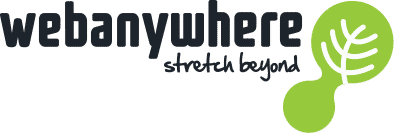It can seem somewhat daunting when researching e-learning solutions, with acronyms and strange phrases dominating promotional material. We’ve decided to give a run-down of what these things actually mean:
1. LMS – Learning Management System
A Learning Management System is, in its most basic form, a way to take your training online. While similar to a VLE, (and some would argue they’re the same, and the difference is purely semantic), the main difference between the two is that an LMS is generally used in a corporate setting (ie business) while a VLE is used in an educational one (ie schools, colleges and universities). Totara is an LMS which we support!
2. Authoring Tool
This one is actually relatively simple – it’s a tool used to author things, in this case, usually e-learning modules. These will generally be integrated into other systems and conform to certain standards such as SCORM (see below).
3. Instructional Design
This one is more of a philosophy than a service, and refers to how instructional tools might be created to maximise the efficiency of knowledge transfer. In general, it will take into account current trends in education training as well as feedback from teachers and learners.
4. SCORM
SCORM, or Sharable Content Object Reference Model is, in essence, a set of standards for how e-learning modules can work. It’s very much a software-based term and mostly refers to how data is formatted at the back-end. SCORM-formatted courses can be transferred between SCORM-compliant LMSs, so you can migrate with ease.
5. Tin Can API
We’ve already spoken about this one in a previous blog post, but it’s an important thing to know. Tin Can API (aka Experience API) is a specification for learning technology that competes with SCORM, and its main advantage is its flexibility, interoperability and its tracking capabilities – there’s a reason it’s seeing massive growth over SCORM!
6. Virtual classroom
Essentially a Virtual Classroom is just another name for e-learning solutions with a centralised point. They allow for collaboration and instruction digitally, so are much more convenient for things such as distance learning or corporate training where time and venues might not necessarily overlap.
7. LTI Connector
LTI here stands for Learning Tools Interoperability, meaning an LTI Connector is a piece of software within an LMS which allows for communication between plugins. When using a diverse range of services, it’s important to ensure you’re working smartly, and an LTI connector can help you do this. An LTI-compliant LMS is one which supports this feature.
8. Blended learning
This is a more straightforward explanation – blended learning refers to a teaching model using a variety of different media. In this context, it refers to the use of online tools to supplement offline tuition, and emphasises a degree of learner-control over the process. A purely LMS-based method of training can leave learners with little experience of actual skills – it’s important to take physical training into account as well through blended learning programs.
9. Action learning
While traditional learning methods generally revolve around instruction, action learning very much emphasises “learning by doing”. Knowledge is much more easily retained when it’s acted upon – or to put it in more relevant terms, when it’s interactive. Web-based learning is much more flexible than traditional methods, and the ability to insert rich media applications into your LMS makes it easier than ever to create effective learning programmes.
10. Personalised learning
Different learners have different needs, whether they be personal or environmental ones. This is in addition to the question of what you’re actually hoping to get out of a teaching programme – is it educational or work-based? With web-based software you’re able to personalise your training for individual learners in a much more simple way – traditionally a personal experience would need one-on-one tuition, but with the use of LMSs it can be as simple as setting the correct user access permissions.
For more information, or to book a demonstration of Webanywhere’s Totara implementation, contact us here.


